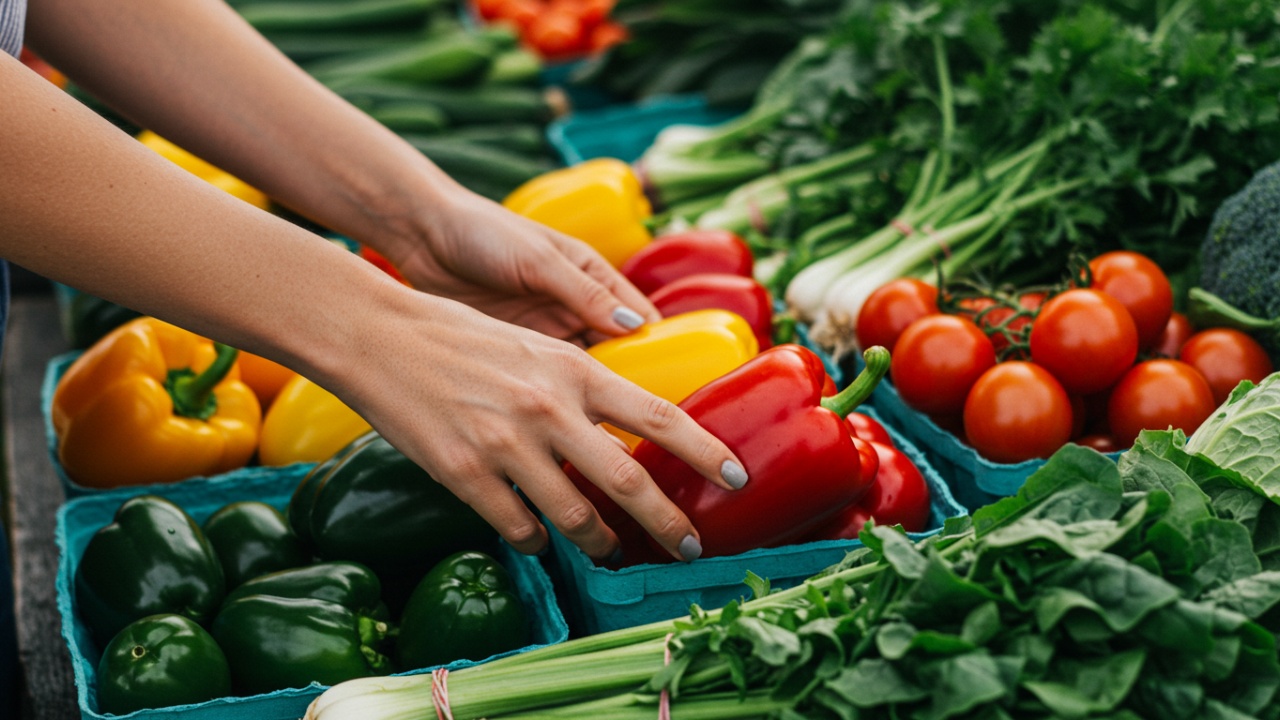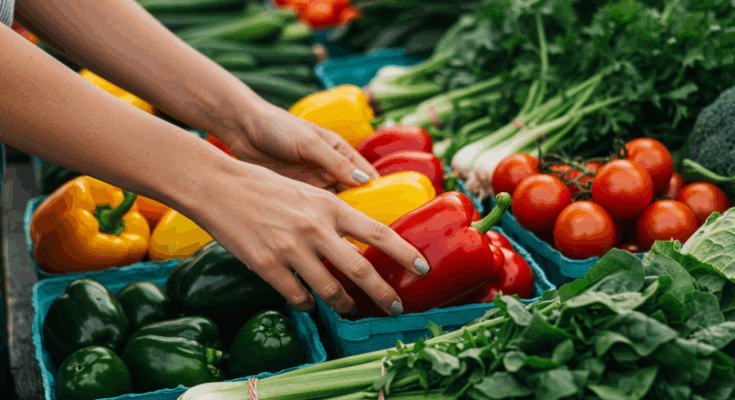In a world dominated by glossy cookbooks, viral TikTok recipes, and precise meal kits, it’s easy to feel like cooking is a scripted performance where deviation spells disaster. But what if the true magic of the kitchen lies not in following instructions to the letter, but in trusting your instincts? Intuitive cooking—relying on your senses, experience, and creativity rather than rigid recipes—can transform meal preparation from a chore into a joyful, empowering art form. This approach isn’t about abandoning structure entirely; it’s about building a personal relationship with food that allows you to improvise, adapt, and innovate. If you’ve ever wondered why professional chefs seem to “just know” what to add or how long to cook something, intuitive cooking is their secret sauce.
This article explores how to cultivate an intuitive kitchen, offering practical steps, insights, and exercises to help you break free from recipe dependence. Whether you’re a beginner overwhelmed by measurements or an experienced home cook seeking more freedom, you’ll find actionable advice here. By the end, you’ll have tools to answer questions like “How do I know when something’s done?” or “What if I don’t have the exact ingredients?” Let’s dive in and reclaim the kitchen as a space for intuition and discovery.
Understanding Intuitive Cooking
What Does It Really Mean?
Intuitive cooking is the practice of preparing meals guided by your senses, knowledge of ingredients, and personal preferences rather than step-by-step recipes. It’s akin to jazz improvisation in music: you start with a basic framework (like a melody or a dish idea) and riff from there. For example, instead of measuring out exactly one teaspoon of salt for a soup, you taste as you go, adding pinches until it feels balanced.
This method draws from culinary traditions worldwide, where grandmothers pass down techniques through demonstration rather than written formulas. In Italian nonnas’ kitchens or Indian home cooking, intuition reigns—adjusting spices based on the day’s produce or the eater’s mood. At its core, it’s about mindfulness: being present with the food, noticing how heat changes textures, or how acids brighten flavors. Common misconceptions paint it as chaotic or only for experts, but anyone can learn it with practice. Start by viewing recipes as suggestions, not mandates, and gradually wean off them.

The Benefits of Going Intuitive
Shifting to intuitive cooking offers tangible rewards. First, it saves time—no more hunting for obscure ingredients or pausing to check instructions. You’ll shop smarter, using what’s in season or on hand, reducing food waste and grocery bills. Nutritionally, it encourages whole foods and balanced meals tailored to your body’s needs, like adding more greens if you’re feeling sluggish.
Mentally, it boosts confidence and reduces stress. Studies in behavioral psychology, such as those on flow states by Mihaly Csikszentmihalyi, show that immersive activities like intuitive cooking enhance well-being and creativity. It also fosters adaptability; if a guest has allergies, you can pivot seamlessly. Environmentally, it promotes sustainability by minimizing packaging from pre-made items. Ultimately, meals become more personal and satisfying—your signature stir-fry might evolve weekly, reflecting your growing intuition.
Building Your Foundation
Mastering the Basics Without Recipes
To cultivate intuition, start with foundational skills that form your culinary “vocabulary.” Learn core techniques: sautéing (quick, high-heat cooking in fat), roasting (dry heat for caramelization), and boiling or steaming (for tenderness). Practice these on simple items like vegetables or proteins. For instance, roast carrots at 400°F until they’re fork-tender and edges brown—about 20-30 minutes, but check by sight and smell.
Understand ingredient behaviors: Acids (lemon, vinegar) cut richness; fats (oil, butter) carry flavors; heat transforms starches (potatoes soften, bread crusts). Build this knowledge through repetition. Set aside one meal a week to cook a familiar dish without a recipe, noting what works. Over time, you’ll internalize ratios, like 2:1 liquid to grain for rice, but adjust based on humidity or variety.
Stocking a Versatile Pantry
An intuitive kitchen thrives on a well-curated pantry that sparks creativity. Focus on versatile staples: Grains (rice, quinoa), proteins (beans, nuts, eggs), aromatics (onions, garlic, ginger), acids (vinegars, citrus), and seasonings (salt, pepper, herbs, spices). Include umami boosters like soy sauce or miso for depth.
Organize for accessibility—group by category to encourage mixing. For beginners, start with 10-15 items: olive oil, balsamic vinegar, canned tomatoes, pasta, lentils, cumin, paprika, thyme, honey, and stock cubes. This setup answers “What can I make with what I have?” by enabling endless combinations, like a lentil stew flavored with whatever spices appeal that day. Rotate stock to keep things fresh, and experiment with one new item monthly to expand your palette.
Developing Your Senses
Balancing Taste and Flavor Profiles
Taste is the cornerstone of intuition. Learn the five basics—sweet, sour, salty, bitter, umami—and how they interplay. Aim for balance: If a dish is too salty, add acid or sweet; if bland, boost umami. Practice with a “flavor wheel” exercise: Taste a plain base (like yogurt) then add elements one by one, noting changes.
Actionable tip: When cooking, taste at every stage. For a sauce, start with base ingredients, simmer, taste, adjust. Common question: “How much seasoning?” Start small—1/4 teaspoon per serving—and build up. Over time, you’ll develop a “mental taste bud” to predict outcomes, like knowing chili needs time to mellow.
Engaging Sight, Smell, and Touch
Intuition isn’t just taste; it’s multisensory. Visually, look for cues: Browning indicates Maillard reaction (flavor development); wilting greens signal overcooking. Smell guides timing—aromatic release means flavors are peaking, like garlic turning golden before burning.
Touch assesses doneness: Press meat for firmness (rare bounces back softly), or bend veggies for snap. Exercise: Blindfold taste tests with family—identify ingredients by texture and aroma to sharpen senses. This holistic approach answers “Is it done yet?” without timers, fostering confidence in high-stakes scenarios like grilling.
Experimentation and Adaptation
Starting Small with Safe Experiments
Begin intuition-building with low-risk tweaks. Modify a favorite recipe: Swap herbs in pesto (basil to cilantro) or proteins in salads (chicken to tofu). Track changes in a journal—what worked, why? This builds a personal recipe database.
For full improvisation, use the “fridge forage” method: Pull out 5-7 items and create a meal. Example: Onions, bell peppers, eggs, cheese, bread → veggie scramble on toast. Set rules like including one carb, protein, and veg for balance. This addresses “Where do I start?” by making experimentation playful and contained.
Learning from Mistakes and Iterating
Mistakes are intuitive cooking’s best teacher. Burnt garlic? Next time, lower heat. Oversalted soup? Dilute with water or add potatoes to absorb. View errors as data: Analyze what went wrong (e.g., distracted timing) and adjust.
Build resilience by cooking forgiving dishes first, like stir-fries where overcooking is redeemable. Share “fails” on social media or with friends for community insights. Over months, patterns emerge—your intuition strengthens, turning “What if I ruin dinner?” into “I can fix this.”
Practical Exercises for Daily Practice
To make this actionable, try these exercises:
- Sensory Mapping (15 mins daily): Cook a simple item (e.g., eggs) multiple ways—boiled, fried, scrambled. Note sensory changes: How does yolk texture shift? What aromas develop?
- Ingredient Deep Dive (Weekly): Pick one item (e.g., tomatoes). Use in 3-5 dishes: Raw in salad, roasted, sauced. Experiment with pairings—acidic with basil, sweet with balsamic.
- No-Measure Challenge (Meal-based): Prepare dinner without tools. Estimate portions by hand (palm for protein). Taste and adjust iteratively.
- Seasonal Improv (Monthly): Shop at a farmers’ market, buy impulsively, then create a meal. This hones adaptation to variability.
These build habits, providing clear paths to intuition without overwhelm.
Overcoming Common Barriers
Time constraints? Intuitive cooking speeds up with practice—prep basics in advance. Fear of failure? Start private; no one’s judging. Limited skills? Online videos demonstrate techniques, but focus on doing over watching. Budget issues? Staples are cheap; intuition maximizes them. For families, involve kids in tasting to make it fun. Persistence turns barriers into strengths.
FAQ
How long does it take to develop kitchen intuition?
It varies, but noticeable progress comes in 1-3 months with consistent practice. Start with one intuitive meal weekly and build from there.
What if I have dietary restrictions?
Intuitive cooking excels here—adapt instinctively, like using gluten-free swaps. Focus on safe ingredients and taste for balance.
Do I need fancy equipment?
No; basics like a knife, pan, and cutting board suffice. Intuition relies on you, not gadgets.
How do I handle inconsistent results?
Track variables (heat, ingredients) in a notebook. Over time, consistency improves as intuition sharpens.
Can intuitive cooking work for baking?
Baking requires more precision due to chemistry, but intuition helps with adjustments like moisture levels or doneness cues.
What if my family prefers familiar recipes?
Introduce changes gradually—tweak one element per meal. Involve them in decisions to build buy-in.
Word count: Approximately 1520. Embracing an intuitive kitchen isn’t about perfection; it’s about enjoyment and growth. Start small, trust yourself, and watch your cooking evolve into something uniquely yours.



